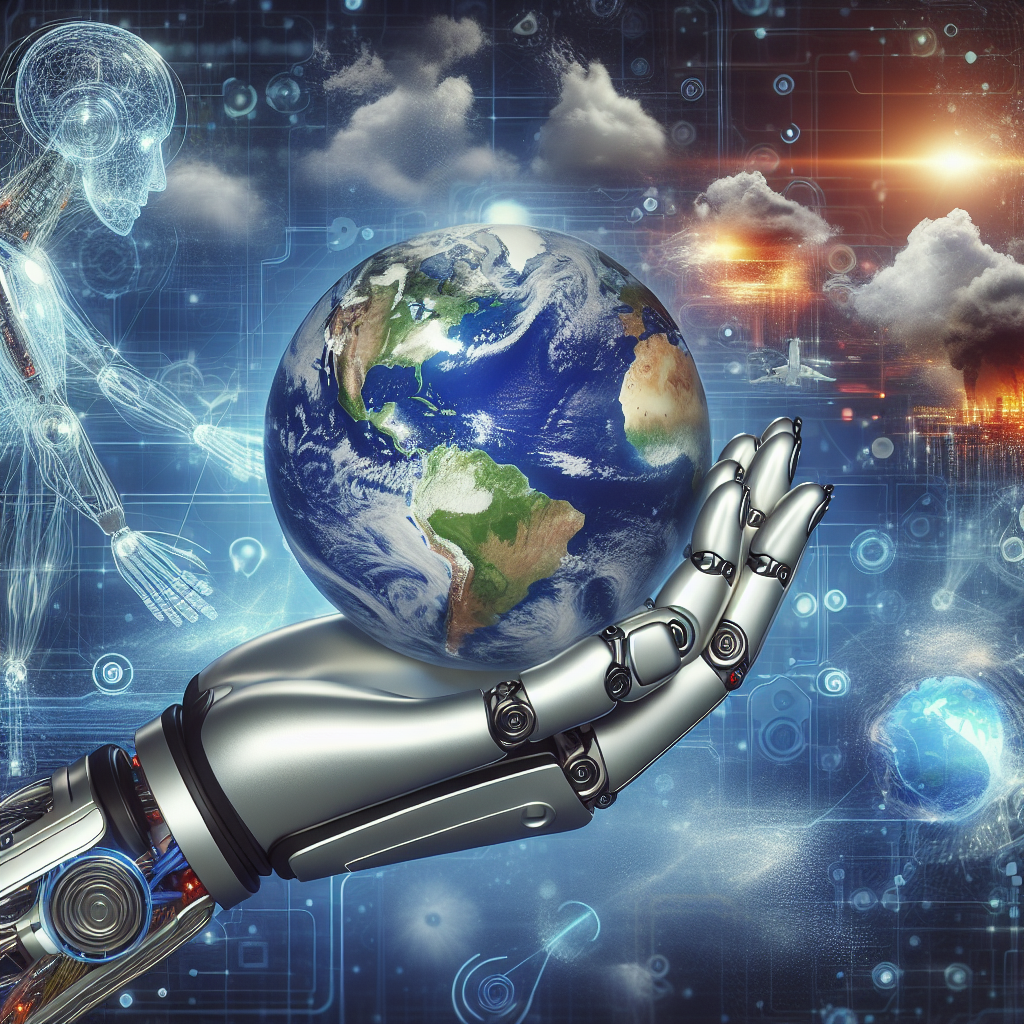In recent years, the use of artificial intelligence (AI) in disaster preparedness and response has been gaining traction as a powerful tool to improve the efficiency and effectiveness of emergency management. AI technologies have the potential to revolutionize how we predict, detect, and respond to natural disasters, such as hurricanes, earthquakes, wildfires, and floods, as well as man-made disasters, such as terrorist attacks and industrial accidents. By harnessing the power of AI, emergency responders and government agencies can better anticipate, plan for, and mitigate the impact of disasters, ultimately saving lives and reducing property damage.
One of the key benefits of using AI in disaster preparedness and response is its ability to process large amounts of data in real-time. AI algorithms can analyze satellite imagery, social media feeds, weather forecasts, and other sources of information to quickly identify potential disasters and assess their impact on affected areas. This allows emergency responders to make more informed decisions and allocate resources more effectively in times of crisis. For example, AI-powered drones can be used to survey disaster-stricken areas and assess damage, while AI-powered chatbots can provide real-time updates and assistance to affected populations.
Another benefit of AI in disaster management is its predictive capabilities. By analyzing historical data and patterns, AI algorithms can forecast the likelihood and severity of future disasters, enabling authorities to take proactive measures to mitigate risks and improve preparedness. For instance, AI models can predict the path of a hurricane or the spread of a wildfire, allowing emergency responders to evacuate at-risk populations and deploy resources to areas most likely to be affected. This predictive capability is particularly valuable in regions prone to recurring disasters, where early warning systems can mean the difference between life and death.
AI can also be used to improve communication and coordination among different stakeholders involved in disaster response. By integrating AI-powered platforms and tools, such as geospatial mapping systems and communication networks, emergency responders can collaborate more effectively and share critical information in real-time. This seamless integration of technologies enables a more coordinated and efficient response to disasters, minimizing confusion and maximizing the impact of relief efforts.
Furthermore, AI can enhance the efficiency of resource allocation during disaster response. By analyzing data on population density, infrastructure, and vulnerability, AI algorithms can help emergency responders prioritize their actions and allocate resources where they are most needed. This ensures that aid reaches those who need it most, reducing response times and improving the overall effectiveness of disaster relief operations. Additionally, AI can optimize logistics and transportation routes, allowing for faster and more cost-effective delivery of supplies and personnel to affected areas.
Despite the numerous benefits of using AI in disaster preparedness and response, there are also challenges and limitations to consider. One of the main challenges is the need for reliable and high-quality data to train AI models effectively. Without accurate and up-to-date data, AI algorithms may produce inaccurate predictions and recommendations, leading to suboptimal decision-making during emergencies. Additionally, there are concerns about the ethical implications of using AI in disaster management, such as privacy issues, bias in decision-making, and the potential for misuse of AI technologies for surveillance or control purposes.
To address these challenges, it is essential for governments, organizations, and AI developers to collaborate and establish guidelines for the responsible use of AI in disaster preparedness and response. This includes ensuring transparency and accountability in AI algorithms, protecting the privacy and rights of affected populations, and actively engaging with stakeholders to address concerns and build trust in AI technologies. By adopting a holistic and ethical approach to AI deployment in disaster management, we can harness the full potential of these technologies to save lives, protect communities, and build resilience against future disasters.
In conclusion, the use of AI in disaster preparedness and response is a game-changer that has the potential to transform how we manage and mitigate the impact of emergencies. By leveraging AI technologies for predictive analytics, real-time data processing, and efficient resource allocation, we can enhance the effectiveness of emergency response efforts and better protect vulnerable populations from harm. While there are challenges and ethical considerations to navigate, the benefits of using AI in disaster management far outweigh the risks, making it an indispensable tool for building resilience in an increasingly unpredictable world.
FAQs:
Q: How can AI help in predicting natural disasters?
A: AI algorithms can analyze historical data, weather patterns, and other sources of information to forecast the likelihood and severity of natural disasters, such as hurricanes, earthquakes, and wildfires. By identifying early warning signs and trends, AI can provide valuable insights to help authorities prepare and respond effectively to potential disasters.
Q: What are some examples of AI technologies used in disaster response?
A: AI-powered drones, chatbots, geospatial mapping systems, and communication networks are just a few examples of AI technologies that are being used in disaster response. These technologies can help emergency responders survey disaster areas, provide real-time updates to affected populations, coordinate relief efforts, and optimize resource allocation.
Q: What are the ethical considerations of using AI in disaster management?
A: Ethical considerations of using AI in disaster management include concerns about privacy, bias in decision-making, and potential misuse of AI technologies for surveillance or control purposes. It is important for governments, organizations, and AI developers to establish guidelines for the responsible use of AI in disaster preparedness and response to address these concerns and build trust in AI technologies.

